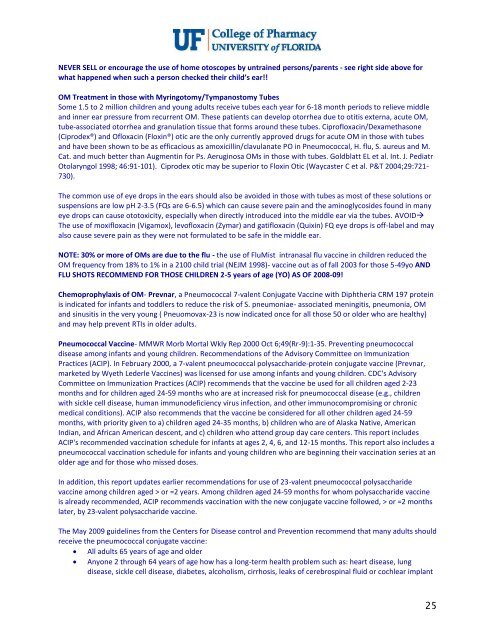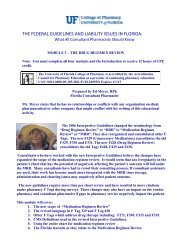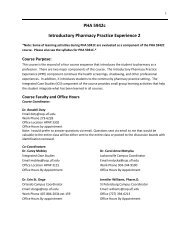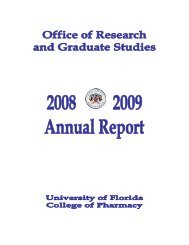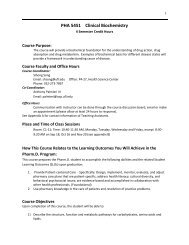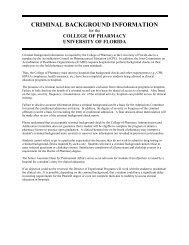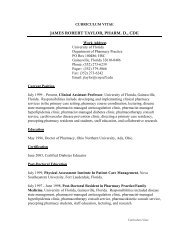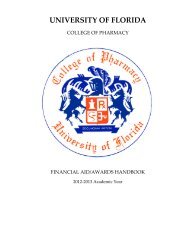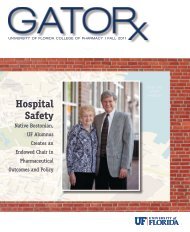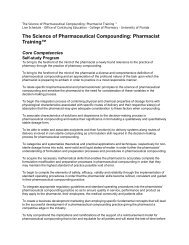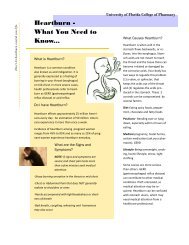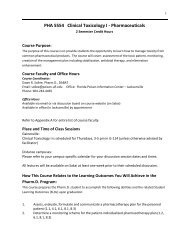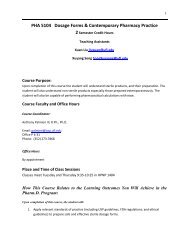INFECTIOUS DISEASE REVIEW Upper Respiratory Tract Infections
INFECTIOUS DISEASE REVIEW Upper Respiratory Tract Infections
INFECTIOUS DISEASE REVIEW Upper Respiratory Tract Infections
You also want an ePaper? Increase the reach of your titles
YUMPU automatically turns print PDFs into web optimized ePapers that Google loves.
NEVER SELL or encourage the use of home otoscopes by untrained persons/parents - see right side above for<br />
what happened when such a person checked their child’s ear!!<br />
OM Treatment in those with Myringotomy/Tympanostomy Tubes<br />
Some 1.5 to 2 million children and young adults receive tubes each year for 6-18 month periods to relieve middle<br />
and inner ear pressure from recurrent OM. These patients can develop otorrhea due to otitis externa, acute OM,<br />
tube-associated otorrhea and granulation tissue that forms around these tubes. Ciprofloxacin/Dexamethasone<br />
(Ciprodex®) and Ofloxacin (Floxin®) otic are the only currently approved drugs for acute OM in those with tubes<br />
and have been shown to be as efficacious as amoxicillin/clavulanate PO in Pneumococcal, H. flu, S. aureus and M.<br />
Cat. and much better than Augmentin for Ps. Aeruginosa OMs in those with tubes. Goldblatt EL et al. Int. J. Pediatr<br />
Otolaryngol 1998; 46:91-101). Ciprodex otic may be superior to Floxin Otic (Waycaster C et al. P&T 2004;29:721-<br />
730).<br />
The common use of eye drops in the ears should also be avoided in those with tubes as most of these solutions or<br />
suspensions are low pH 2-3.5 (FQs are 6-6.5) which can cause severe pain and the aminoglycosides found in many<br />
eye drops can cause ototoxicity, especially when directly introduced into the middle ear via the tubes. AVOID<br />
The use of moxifloxacin (Vigamox), levofloxacin (Zymar) and gatifloxacin (Quixin) FQ eye drops is off-label and may<br />
also cause severe pain as they were not formulated to be safe in the middle ear.<br />
NOTE: 30% or more of OMs are due to the flu - the use of FluMist intranasal flu vaccine in children reduced the<br />
OM frequency from 18% to 1% in a 2100 child trial (NEJM 1998)- vaccine out as of fall 2003 for those 5-49yo AND<br />
FLU SHOTS RECOMMEND FOR THOSE CHILDREN 2-5 years of age (YO) AS OF 2008-09!<br />
Chemoprophylaxis of OM- Prevnar, a Pneumococcal 7-valent Conjugate Vaccine with Diphtheria CRM 197 protein<br />
is indicated for infants and toddlers to reduce the risk of S. pneumoniae- associated meningitis, pneumonia, OM<br />
and sinusitis in the very young ( Pneuomovax-23 is now indicated once for all those 50 or older who are healthy)<br />
and may help prevent RTIs in older adults.<br />
Pneumococcal Vaccine- MMWR Morb Mortal Wkly Rep 2000 Oct 6;49(Rr-9):1-35. Preventing pneumococcal<br />
disease among infants and young children. Recommendations of the Advisory Committee on Immunization<br />
Practices (ACIP). In February 2000, a 7-valent pneumococcal polysaccharide-protein conjugate vaccine (Prevnar,<br />
marketed by Wyeth Lederle Vaccines) was licensed for use among infants and young children. CDC's Advisory<br />
Committee on Immunization Practices (ACIP) recommends that the vaccine be used for all children aged 2-23<br />
months and for children aged 24-59 months who are at increased risk for pneumococcal disease (e.g., children<br />
with sickle cell disease, human immunodeficiency virus infection, and other immunocompromising or chronic<br />
medical conditions). ACIP also recommends that the vaccine be considered for all other children aged 24-59<br />
months, with priority given to a) children aged 24-35 months, b) children who are of Alaska Native, American<br />
Indian, and African American descent, and c) children who attend group day care centers. This report includes<br />
ACIP's recommended vaccination schedule for infants at ages 2, 4, 6, and 12-15 months. This report also includes a<br />
pneumococcal vaccination schedule for infants and young children who are beginning their vaccination series at an<br />
older age and for those who missed doses.<br />
In addition, this report updates earlier recommendations for use of 23-valent pneumococcal polysaccharide<br />
vaccine among children aged > or =2 years. Among children aged 24-59 months for whom polysaccharide vaccine<br />
is already recommended, ACIP recommends vaccination with the new conjugate vaccine followed, > or =2 months<br />
later, by 23-valent polysaccharide vaccine.<br />
The May 2009 guidelines from the Centers for Disease control and Prevention recommend that many adults should<br />
receive the pneumococcal conjugate vaccine:<br />
All adults 65 years of age and older<br />
Anyone 2 through 64 years of age how has a long-term health problem such as: heart disease, lung<br />
disease, sickle cell disease, diabetes, alcoholism, cirrhosis, leaks of cerebrospinal fluid or cochlear implant<br />
25


